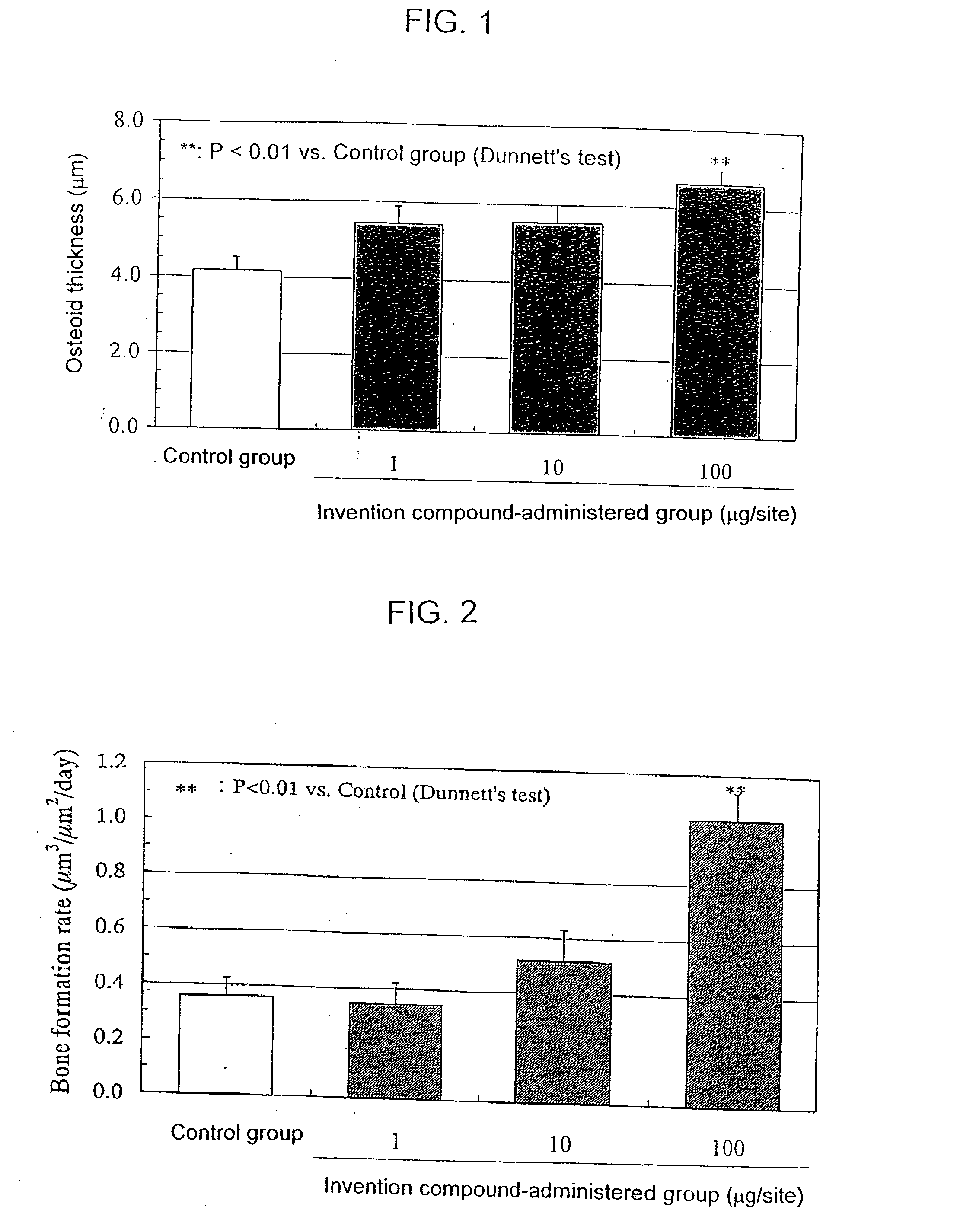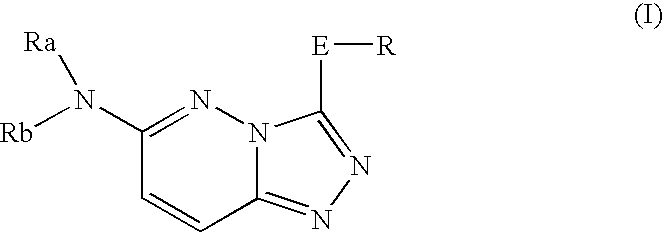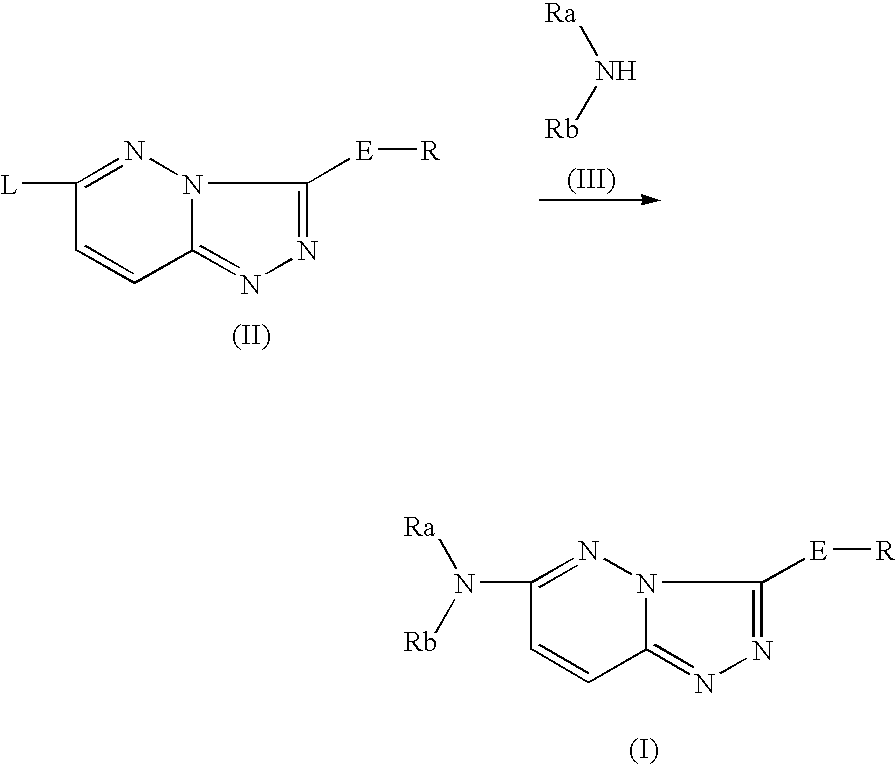Nitrogen-containing heterocyclic compound
a heterocyclic compound and nitrogen-containing technology, applied in the field of nitrogen-containing heterocyclic compounds, can solve the problems of systemic weakness and dementia, most of the therapeutic agents do not exhibit marked bone formation-stimulating effect, and their clinical utility is unknown
- Summary
- Abstract
- Description
- Claims
- Application Information
AI Technical Summary
Benefits of technology
Problems solved by technology
Method used
Image
Examples
experimental example 1
Alkaline Phosphatase (ALP) Activity Measurement in Mouse Osteoblast Cell Line
[0064] A mouse osteoblast cell line MC3T3-E1 was seeded at the density of 3000 cells / well in 96-well plates in 5% fetal bovine serum (FBS)-supplemented a-minimum essential medium (MEM) and incubated for 4 to 6 hours. To the cell thus cultured, a test compound dissolved in dimethyl sulfoxide (DMSO) (final concentration of DMSO: 0.5%) was added, and the incubation was continued for further 3 days. After washing the cells with a phosphate-buffered physiological saline, the substrate was added and incubated at 37° C. for 10 to 15 minutes. The reaction was stopped by adding 0.5M sodium hydroxide, and the absorbance at a wavelength of 405 nm (correction wavelength: 492 nm) was measured and represented by a % value based on the value in the control group being regarded as 100%, from which the ALP activity was calculated. The measurement described above was in accordance with the method by Lowry et al (Journal of ...
experimental example 2
Bone Formation Stimulation Test of Rat Topical Administration
[0066] The compound of Example 23 according to the present invention (1, 10 or 100 μg) was dispersed in 0.1 ml of a mineral oil and given successively for 10 days once a day using a 1 ml syringe fitted with a 25 G injection needle subcutaneously to the right temporal region of each of 10-week old male Wistar rats (n=6) under anesthesia with ether. In a control group, each rat was treated only with 0.1 ml of the mineral oil once a day for successive 10 days. On the 11th day of the treatment, the drug was discontinued and on the 18th day each rat was sacrificed to remove the calvaria. Before sacrificing the animal, tetracyclin (25 mg / kg) was given on the 10th day of the treatment and then calcein (20 mg / kg) was given subcutaneously to the dorsal area on the 16th day for labeling the bone. The calvaria thus obtained was fixed in 70% ethanol, and coronal sections were made according to a standard procedure and subjected to a ...
reference example 1
[0074] A mixture of (6-chloropyridazin-3-yl)hydrazine, 4-nitrobenzoic acid, WSCD hydrochloride and THF was stirred at room temperature for 2 hours. The reaction solution was combined with water, and the precipitate was collected by filtration, washed with water and diethyl ether to obtain N′-(6-chloropyridazin-3-yl)-4-nitrobenzohydrazide. To this, acetic acid was added, and the mixture was stirred at 110° C. for 2 hours, the reaction solution was concentrated under reduced pressure, and the resultant crude crystal was washed with ethanol to obtain 6-chloro-3-(4-nitrophenyl)-1,2,4-triazolo[4,3-b]pyridazine. Dat (F:276).
PUM
| Property | Measurement | Unit |
|---|---|---|
| wavelength | aaaaa | aaaaa |
| wavelength | aaaaa | aaaaa |
| bone resorption | aaaaa | aaaaa |
Abstract
Description
Claims
Application Information
 Login to View More
Login to View More - R&D
- Intellectual Property
- Life Sciences
- Materials
- Tech Scout
- Unparalleled Data Quality
- Higher Quality Content
- 60% Fewer Hallucinations
Browse by: Latest US Patents, China's latest patents, Technical Efficacy Thesaurus, Application Domain, Technology Topic, Popular Technical Reports.
© 2025 PatSnap. All rights reserved.Legal|Privacy policy|Modern Slavery Act Transparency Statement|Sitemap|About US| Contact US: help@patsnap.com



